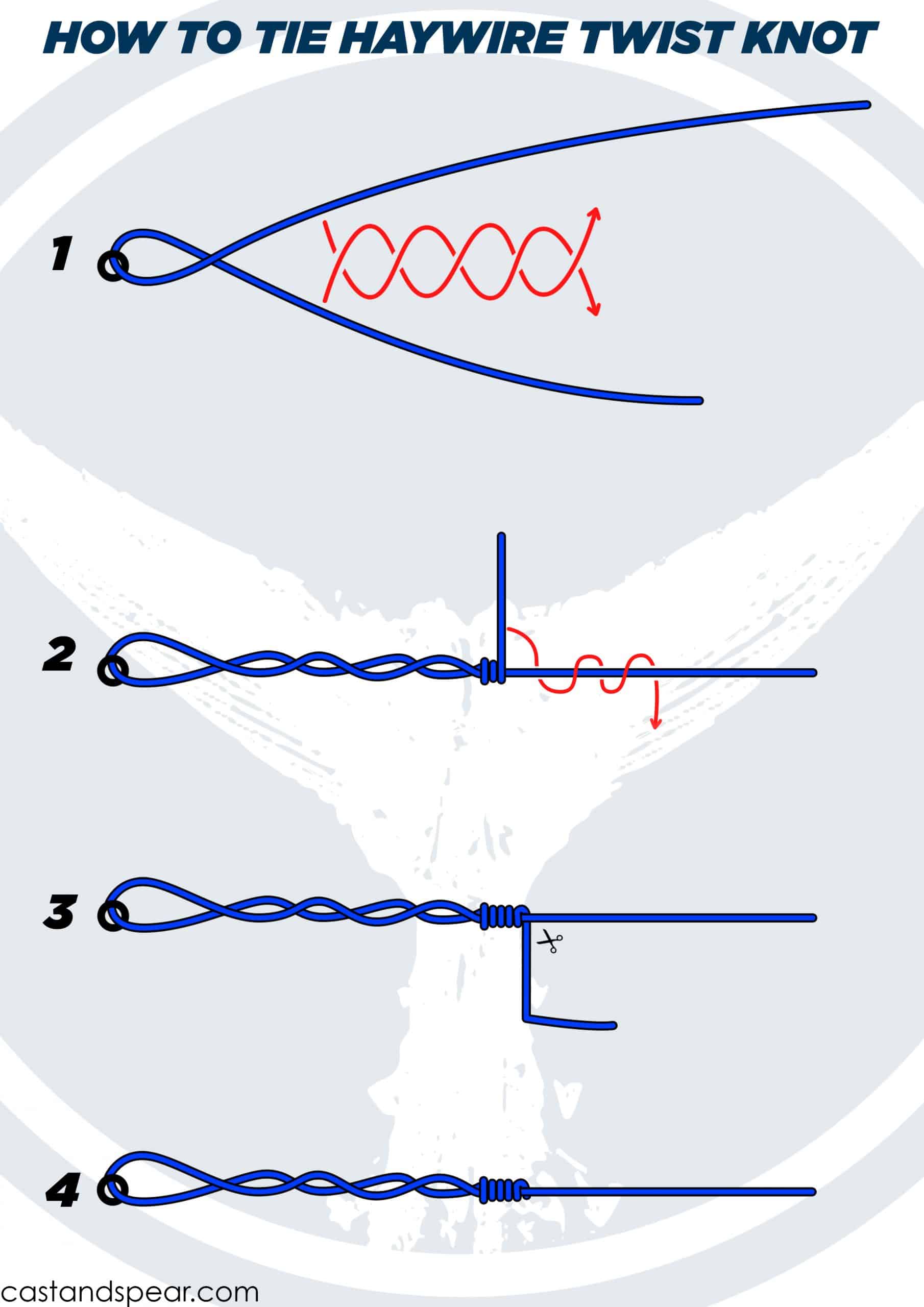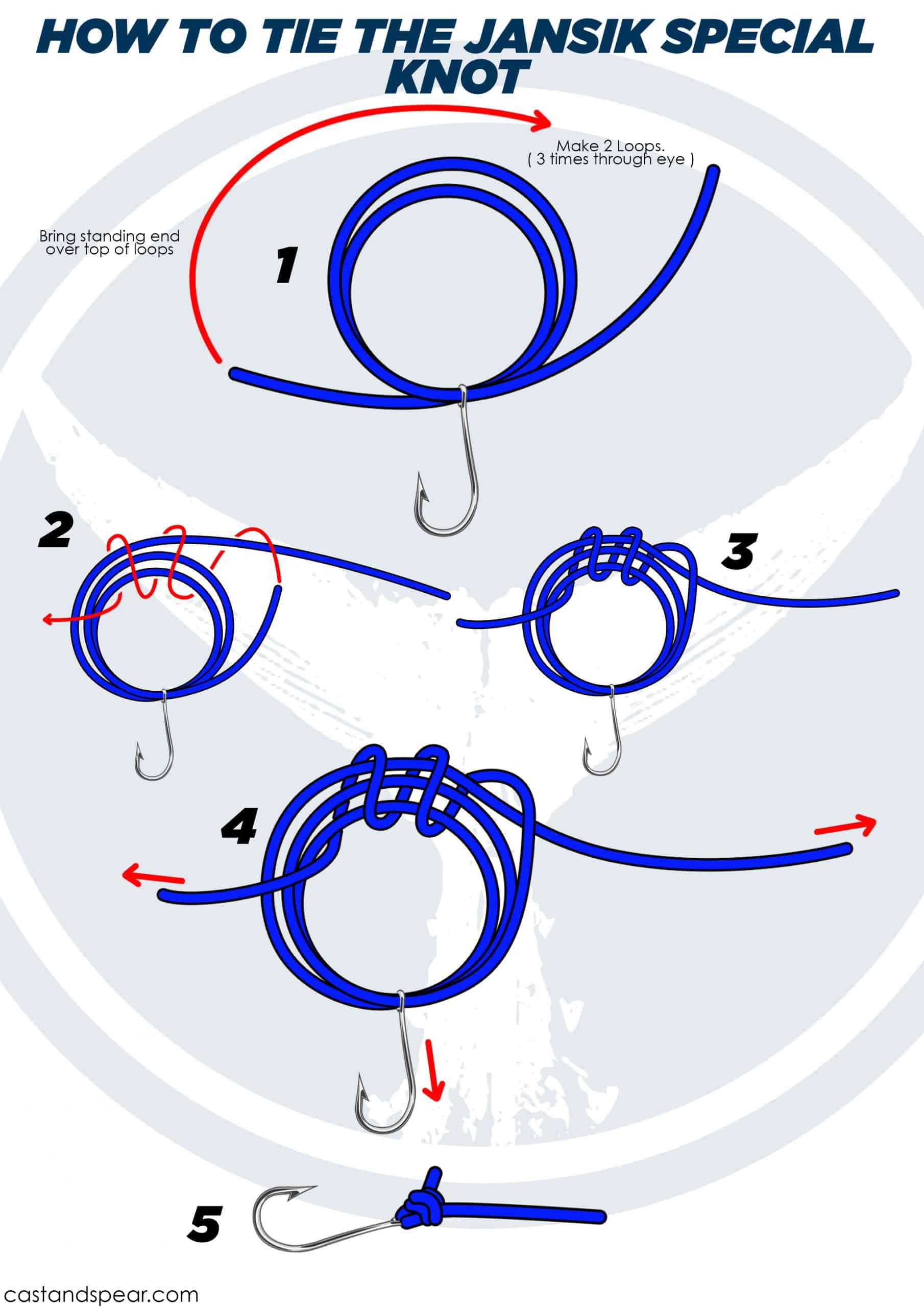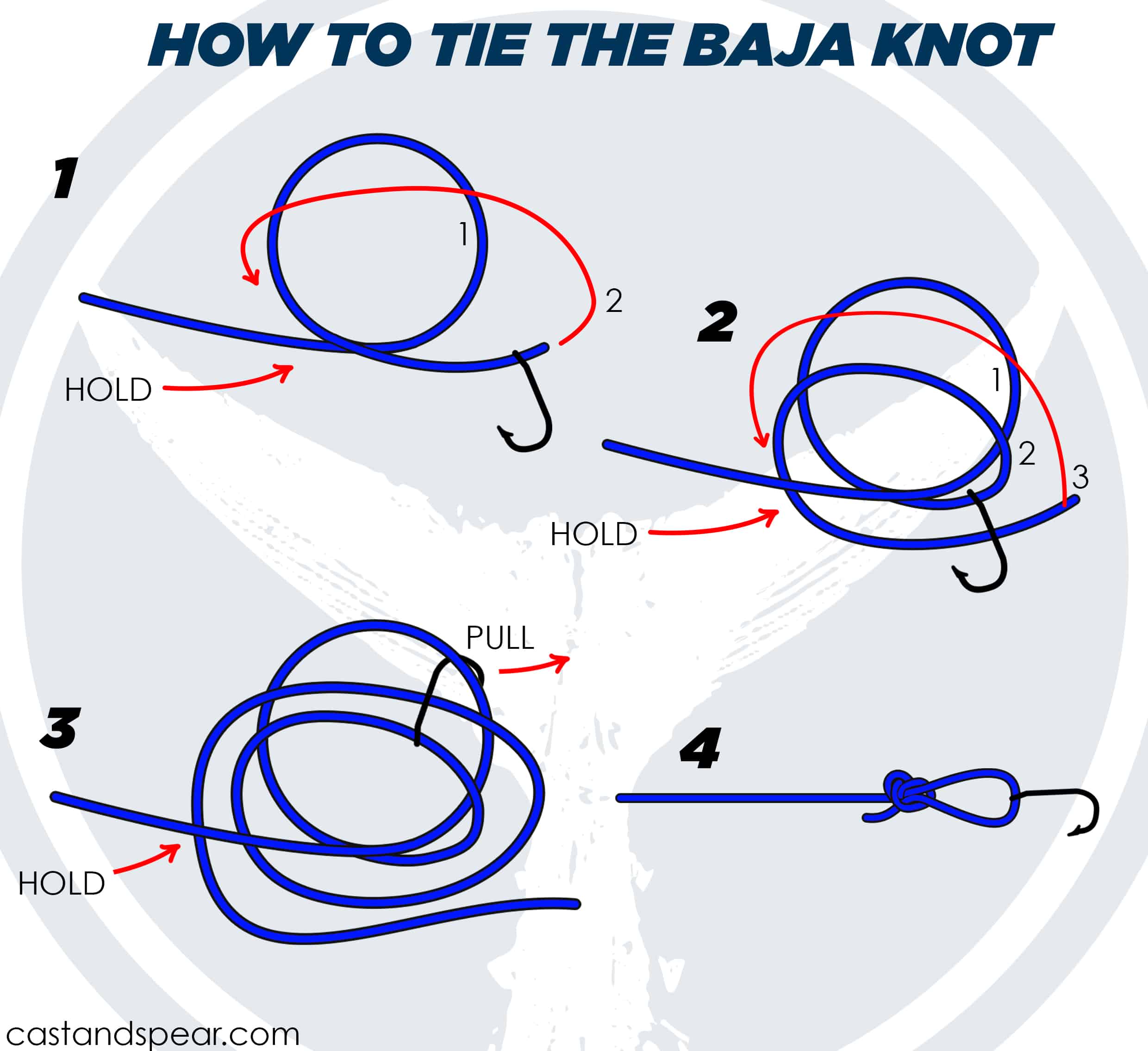There are different types of sailing knots, including bowline, clove hitch, stopper knot, cleat hitch, sheet bend, two half hitches, rolling hitch, figure eight knot, and reef knot. Learning how to tie these knots is essential for sailing and anchoring. To master the art, you must frequently practice so as to develop muscle memory.
This article will look at the different sailing knots, their uses, and the specialty knots for different situations.
Sailing Knots and Their Uses
If you plan to go out sailing, here are the most commonly used knots you need to know and how to use each.
Sheet Bend
Many sailors use the sheet bend knot to tie two ropes of different diameters. This type of knot is more secure, works better when the diameter difference is not too wide, and is easy to untie.
To tie this knot, you need to form a bend on the thicker rope while the thinner one wraps around it. You’ll achieve greater stability if the free ends of both ropes are on the same side as the knot.
However, if the diameters of the ropes are different, you should double the sheet bend. To do this, wrap the thinner rope twice around the thicker one, and pull tight.
A sheet bend knot should be preferably used for ropes that are under load; otherwise, it will untie if the rope is not under any strain. Additionally, this type of knot can be used during sailing and comes in handy for making fish nets.
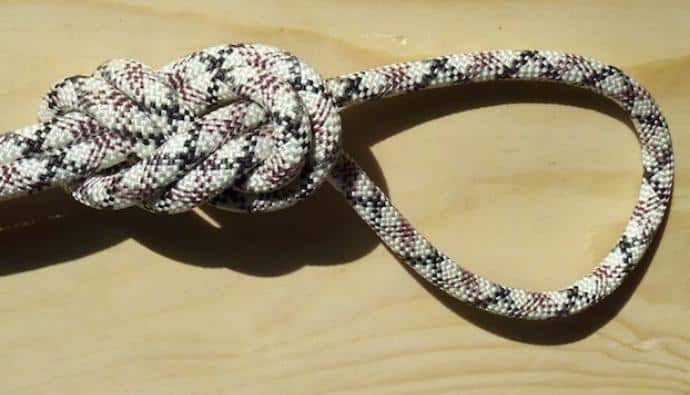
Figure Eight Knot
The figure eight knot is a stopper knot with many applications. Commonly used by sailors, the figure eight knot is used at the end of lines to prevent them from unreeving.
One of its main advantages is that even after being tied to a heavy load, it doesn’t bind; it loosens much faster than any other knots.
To make this knot, you need to join two ropes together. You’ll need to tie a loose figure-eight knot at the end of the first rope and then thread the second one backward parallel to the first one. Apart from sailing, this knot is also used by climbers because it’s pretty safe.
Stopper Knot
To stop a line from pulling through a rope clutch, you need to tie a knot at the end of it. The stopper knot is the most secure option because it does not come loose easily like the figure eight knot or simple overhand knot.
You can easily tie the stopper knot by using your hand as the form. Loop the end of the line two times around your palm, tuck the other end under these two loops, and pull the loops from your hand. Wrap the working end two times around your open hand. After getting two full wraps, pull the knot to tighten it.
Rolling Hitch
The rolling hitch is a slip knot used by most people to transfer weight from one rope to the next. It comes in handy when there’s a jammed winch.
You can use the extra line to tie the rolling hitch of a jammed line, move the load to the extra line, and free up the jammed line. Additionally, this knot can create an adjustable noose that won’t slip under a load; therefore, you can use it to secure tie-downs on deck.
The rolling hitch works best when it’s used on a thinner rope. However, the knot does not work for modern materials such as Spectra, Dyneema, and Polypropylene. It will not hold for such materials. These knots are used by Boy Scouts to secure tent pegs.
Reef Knot
Popularly known in summer camps as a square knot, the reef knot is used on boats for reefing and tethering ropes around the boom. You can make this note in simple steps by tying the right-handed overhand knot over the left-handed overhand knot or vice versa. It creates a neat knot on a furled sail.
This knot is only ideal for reefing. It’s not recommended for joining ropes; you can use other secure and better knots for this purpose.
Bowline Knot
The bowline knot is the most popular sailing knot. This knot has been used for at least 500 years.
When tied, it forms a fixed noose that can’t slip; therefore, it can be used to secure sheets to the headsail. This bowline will turn the end f your line into a loop, making it easy to tie it around a fixed object, smaller boat, or post.
This knot can also be used to hang a hammock. When the bowline is under pressure, it tightens but doesn’t untie. No matter how tight it becomes when loaded, it can still be easily untied. However, you have to remove the load first.
Specialty Knots for Different Situations
Some knots are used for specific situations, such as docking and anchoring, while others are for emergencies. Let’s look at each of these knots and how to tie them.
Clove Hitch
A clove hitch is a very simple knot that is used during docking. The advantage of this knot is that it’s very quick to tie and untie.
On sailboats, it’s commonly used to secure fenders to a lifeline as you come in to dock. It can be used to secure the dock line to a piling temporarily. However, it doesn’t hold like the bowline; therefore, the hitch might untie and become free as the boat moves around the dock.
It’s made up of two overhand knots winding in different directions. You should not use a clove hitch when the rope is tied to a cylindrical object that rotates; the knot will definitely loosen up.
Cleat Hitch
The cleat hitch knot is used to secure the dock line. It’s commonly used on a sailboat during towing, docking, or rigging a preventer. However, you need to know how to do it properly. It’s quite easy to tie a proper cleat cheat, and you can release it under a load without hurting your fingers.
As you become more familiar with knots, you’ll realize that some are related. For instance, the cleat cheat and two half hitches are clove hitches. While the cleat hitch bends around the horns of the cleat, the latter hitches get tied on the standing end of the line.
Two Half Hitches
The two half hitches are also known as fishing ties and were used by ancient sailors to attach the anchor. It’s also used to tie the boat to equipment like seat harness rings.
To tie it, pass the line two times around the object it needs to be secured to. Tie one hitch by passing the working end of your rope behind the standing end and pulling it. Repeat the process to tie the half hitch.
This knot is easy to execute and forms a noose that can be smaller or larger depending on your needs. Since it has a round turn, it comes in handy if you need to secure your dock line to a piling. It’s also the best method to stop a fender whip from slipping.
Conclusion
Whether you are a beginner or sail frequently, it’s essential to know the different types of knots. This information will come in handy when securing lines or during an emergency. While there are different types of knots, you can master them if you practice regularly and become more familiar with the techniques.
You need to know the basic knots and essential knots for different situations. For instance, if you need to dock or anchor, you should go for the knots that make it easy to achieve this.

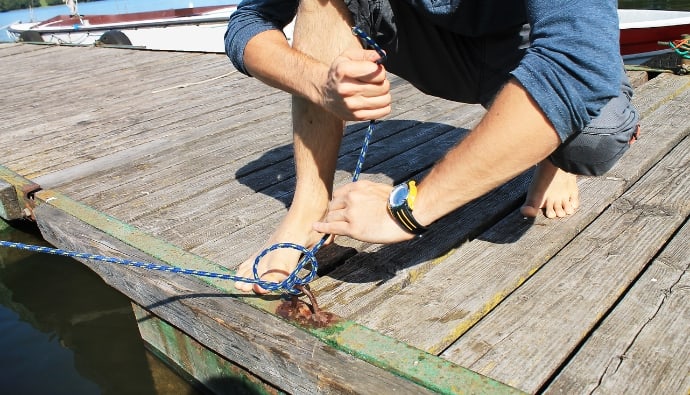











 Facebook
Facebook YouTube
YouTube